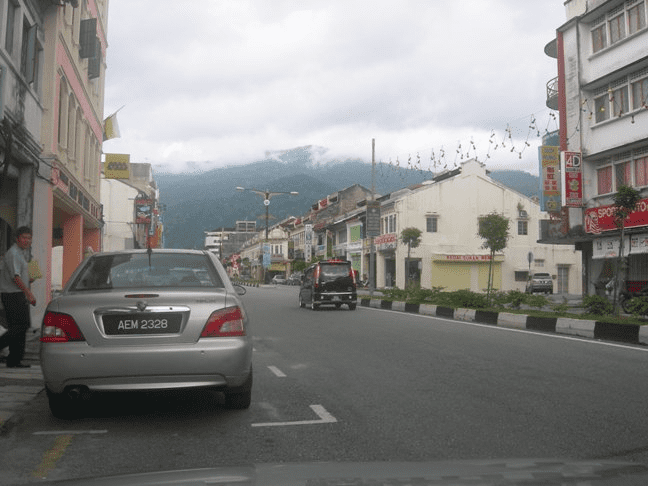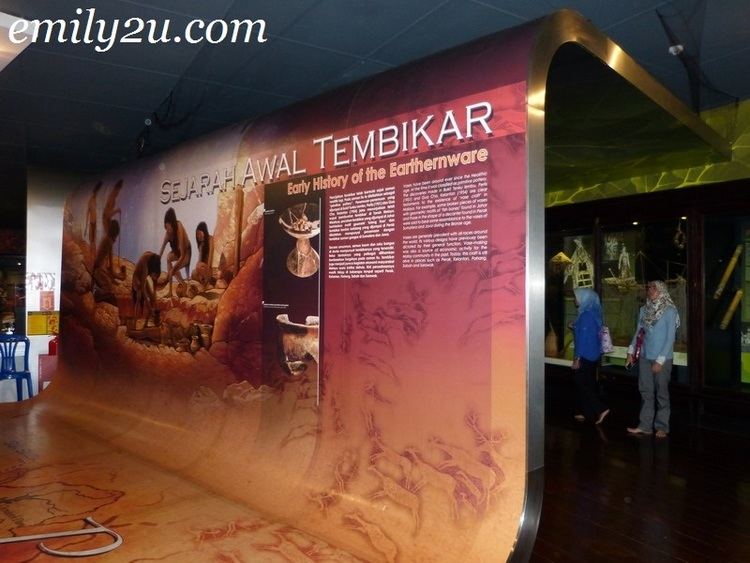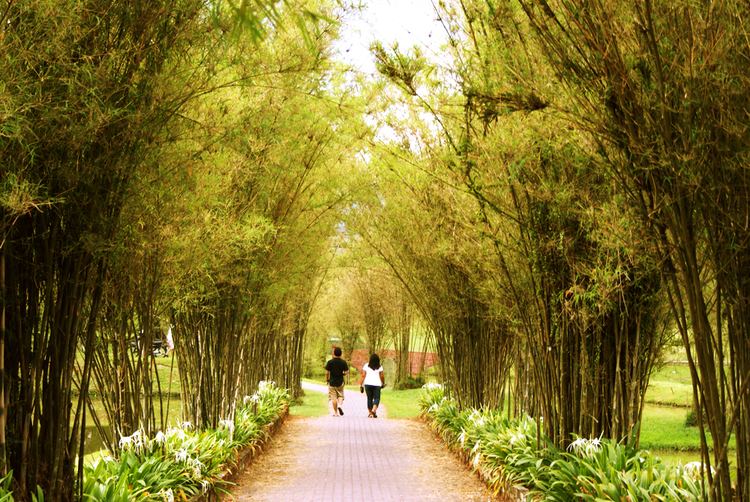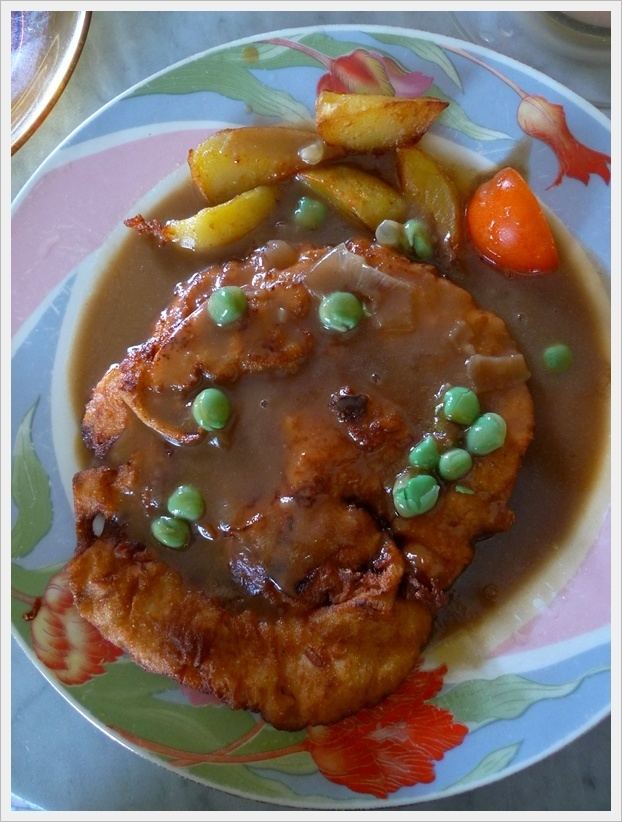Country Area 186.46 km2 District Larut, Matang & Selama Mayor Tuan Omor Bin Saad | ||
 | ||
Points of interest | ||
Map of Taiping, Perak
Taiping (Chinese pronunciation: /tʰaɪ̯⁵¹piŋ/; Malay pronunciation: /taipeŋ/)(Chinese: 太平, Hokkien: Thài-pêng; Jawi: تاءيڤيڠ, Ta'iping) is a town located in Larut, Matang and Selama District, Perak, Malaysia. It is located approximately 48 km (30 mi) northwest of Ipoh, the capital of Perak, and 78 km (48 mi) southeast of George Town, Penang. With a population of 217,647 (in 2011), it is the second largest town in Perak after Ipoh, the state capital.
Contents
- Map of Taiping Perak
- Hotel review flemington hotel taiping perak malaysia
- Crocodile at zoo taiping perak
- History
- Geography and climate
- Climate
- Town layout
- Education
- Attractions
- Notable people
- Rail
- References

Taiping took over Kuala Kangsar's role as the state capital from 1876 to 1937, but was then replaced by Ipoh. Its growth slowed down after that, but in recent years the town has been developing rapidly again. Perak State Museum is located in the town.

Taiping also receives some limelight for being the wettest town in Peninsular Malaysia. The average annual rainfall is about 4,000mm in Taiping while the peninsula's average is 2,000mm – 2,500mm. Its unusual rainfall has also led to a fertile collection of flora and century-old rain trees in the Taiping Lake Gardens.

Hotel review flemington hotel taiping perak malaysia
Crocodile at zoo taiping perak
History
The area developed quickly in the 19th century when tin was discovered. The mines attracted large numbers of settlers, particularly Chinese. Feuds began between the different groups of Chinese immigrants and became so bitter that in the early 1870s, the British intervened and assumed control of the town. Taiping was the capital for the districts of Larut, Matang and Selama in Perak. Before 1937, Taiping was the capital of the state of Perak and the centre of a long and drawn out war resulting in a change of rulership for the state. Taiping used to be known as Klian Pauh – Klian meaning mine while Pauh is a type of small mango.
Long Jaafar has been historically credited with the discovery of tin in Larut in 1848. According to legend, Long Jaafar had an elephant named Larut and he used to take this elephant with him when journeying between Bukit Gantang and Lubok Merbau. One day the elephant went missing and when the elephant was eventually found three days later Long Jaafar noticed tin ore embedded in the mud that was on the elephant's legs. It is said that this was how Larut got its name.
Eventually in 1850, Larut district was bestowed upon Long Jaafar by Raja Muda Ngah Ali and the Chiefs of Perak: the Temenggong, Panglima Bukit Gantang, Panglima Kinta, Syahbandar and Seri Adika Raja. Some time later, the Sultan of Perak, Sultan Abdullah, died in 1857 and a series of succession disputes ensued. Unhappy with the abuse and favouritism of various royalties, rival Malay camps took sides with one or the other of the two great Chinese secret societies present in there at the time.
Long Jaafar established and developed his administrative centre at Bukit Gantang and made Kuala Sungai Limau at Trong the principal harbour of the Larut Settlement. In 1857 Long Jaafar was succeeded by his son Ngah Ibrahim. Sultan Jaffar Muazzam Shah presented an acknowledgement letter to Ngah Ibrahim on 24 May 1858. This letter was signed by Sultan Jaffar, Raja Muda Ngah Ali and the Raja Bendahara of Perak. In the time of Ngah Ibrahim the Chinese increased in number and by early 1860 two large groups were formed by the Chinese, the "Five Associations" whose members worked in the mines of Klian Pauh and the "Four Associations" whose members worked in the mines of Klian Baharu.
Mining rights were given to the Hakka "Five Associations" or Go-Kuan (五館 or 五群) and the Cantonese "Four Associations" or Si-Kuan (四館). Chung Keng Quee (鄭景貴) was leader of the Hakka Go-Kuan and the Hai San (海山) society that they belonged to, and began to operate his tin mines in Larut in 1860. Larut was destined to be plagued by four major wars between members of both the Cantonese Go-Kuan Ghee Hin Society (義興私會黨) and the Hakka Hai San society. Many Hakka had fled China when the Taiping Rebellion broke out there and found work in the mines of Chung Keng Quee establishing his position over the mining area in Larut as leader of the Hai San from 1860 to 1884.
The capital of Perak was moved from Bandar Baru (New Town) to Taiping after Datok Maharaja Lela assassinated the first British Resident of Perak Mr. James Wheeler Woodford Birch at Pasir Salak in 1875. In 1937, the capital of Perak was moved from Taiping to Ipoh.
The town's mining industry continued to thrive; the country's first railway was built to transport tin from Taiping to Port Weld (now known as Kuala Sepetang) at the coast for export. The first train in Malaysia took its schedule on 1 June 1885.
By 1900, an English language school, a newspaper, and the Perak Museum (the oldest in Malaysia) had been established.
Although Taiping's economy declined with the dwindling tin deposits, tin mining still remains an important industry in the area as do rubber and rice.
Geography and climate
Taiping is situated on a plain to the west of the Bintang Mountains. Perak's capital city, Ipoh, is approximately 48 km (30 mi) southeast of the town, while George Town, the capital city of the neighbouring state of Penang, lies 78 km (48 mi) away to the northwest.
Climate
Taiping also receives some limelight for being the wettest town in Peninsular Malaysia. The average annual rainfall is about 3,000mm in Taiping while the peninsula's average is 2,000mm – 2,500mm. Its unusual rainfall has also led to a fertile collection of flora and century-old rain trees in the Taiping Lake Gardens.
Town layout
The following towns, suburbs, and neighbourhoods comprise the area formally (and collectively) known as Taiping:
Education
Primary and secondary education in Taiping are provided by national-type schools and Chinese-medium schools.
Attractions
Notable people
Rail
The Taiping railway station was the first operational train station in Malaysia. Originally, the station served the local tin mines, transporting ore to Port Weld (now Kuala Sepetang) and mine workers to workers settlements. In the 1930s, railway connections to other towns like Ipoh, Kuala Lumpur, and Singapore started. The Taiping-Port Weld line was dismantled by KTMB in the 1980s.
The station was previously served only by KTM Intercity trains, with a one way trip to KL Sentral taking about six hours. Since 1 July 2015 however, the station has also been served by KTM ETS's ETS Ekspres service, reducing the travel time on the same route to about three hours. In addition, Taiping also serves as a stop on the ETS Transit service between Ipoh and Padang Besar.
